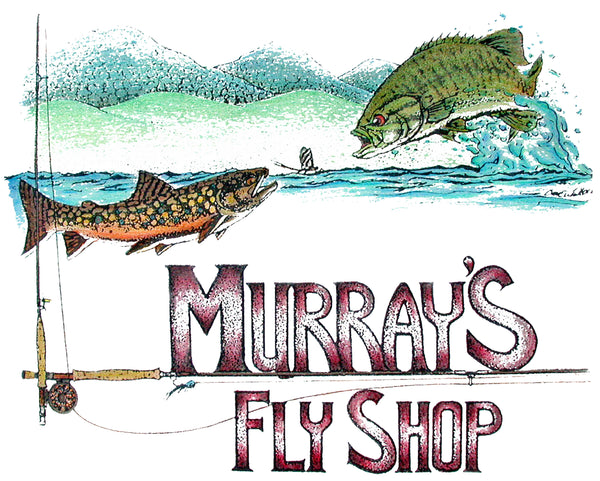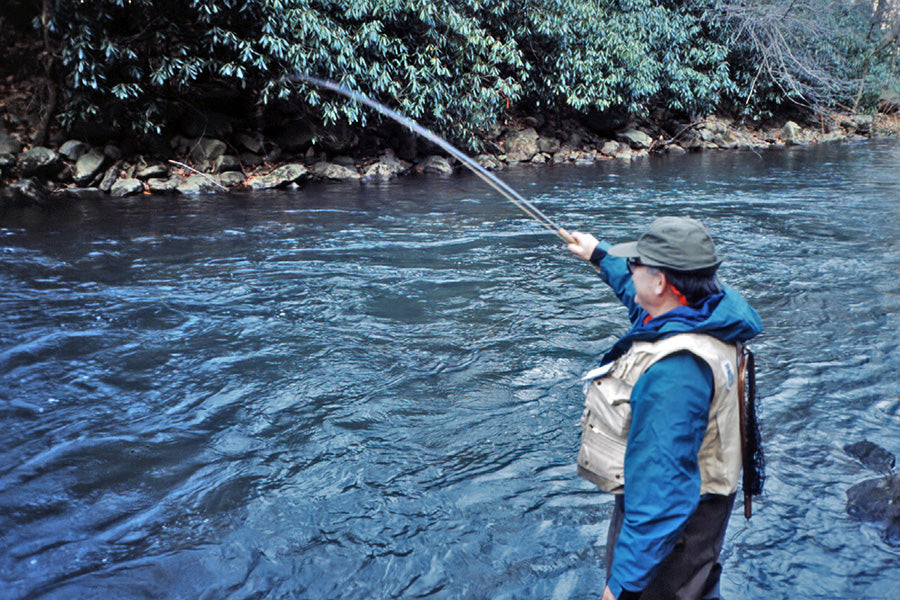
Bass Nymph Fishing
Learn the intricacies of Nymph Fishing for Smallmouth Bass
I have many angling friends who consistently catch big smallmouth bass on large nymphs. In fact, one of my close friends caught a 5-lb smallmouth on a large nymph.
For many years the smallmouth fishing has been done mainly with poppers, deer hair bass bugs and streamers. However, this is changing. In our full day fly fishing schools conducted in the summer, we teach four different techniques to fish large nymphs for bass. When the students realize how effective these methods are, they not only use them in our schools but later on in their personal fishing.
Actually, I learned to fish large nymphs from Charlie Brooks on the Madison River in Montana and from Ray Hurley on the Yellowstone River in the 70's and 80's. Since I fished for smallmouth bass a great amount in the North and South Fork of the Shenandoah River it was only natural that I would use the tactics for nymph fishing which Brooks and Ray taught me in Montana.

The Brooks Method
I fished with Brooks a great amount and we became very good friends over the years. Brooks kept pushing me to use large Stonefly Nymphs especially in a particular hole behind the barns on the Madison because he wanted me to catch some very large browns. He taught me the "Brooks Method" which is the technique that we use in our schools. In order to use a floating line in our schools, I call this "swing nymphing" where as Brooks used a self-made fast sinking head line.
This method is easy to learn and it is very effective. It will enable you to get your nymphs deeper than any other method with a floating line. Basically you are casting 20 feet up and across stream, allowing the nymph to sink, then with a highly extended fly rod you sweep the nymph deeply down the river right beside where you are standing. You quickly feel the strike and hook the bass. The Murray's Bass Stonefly Nymph size 4 is very effective with this method.
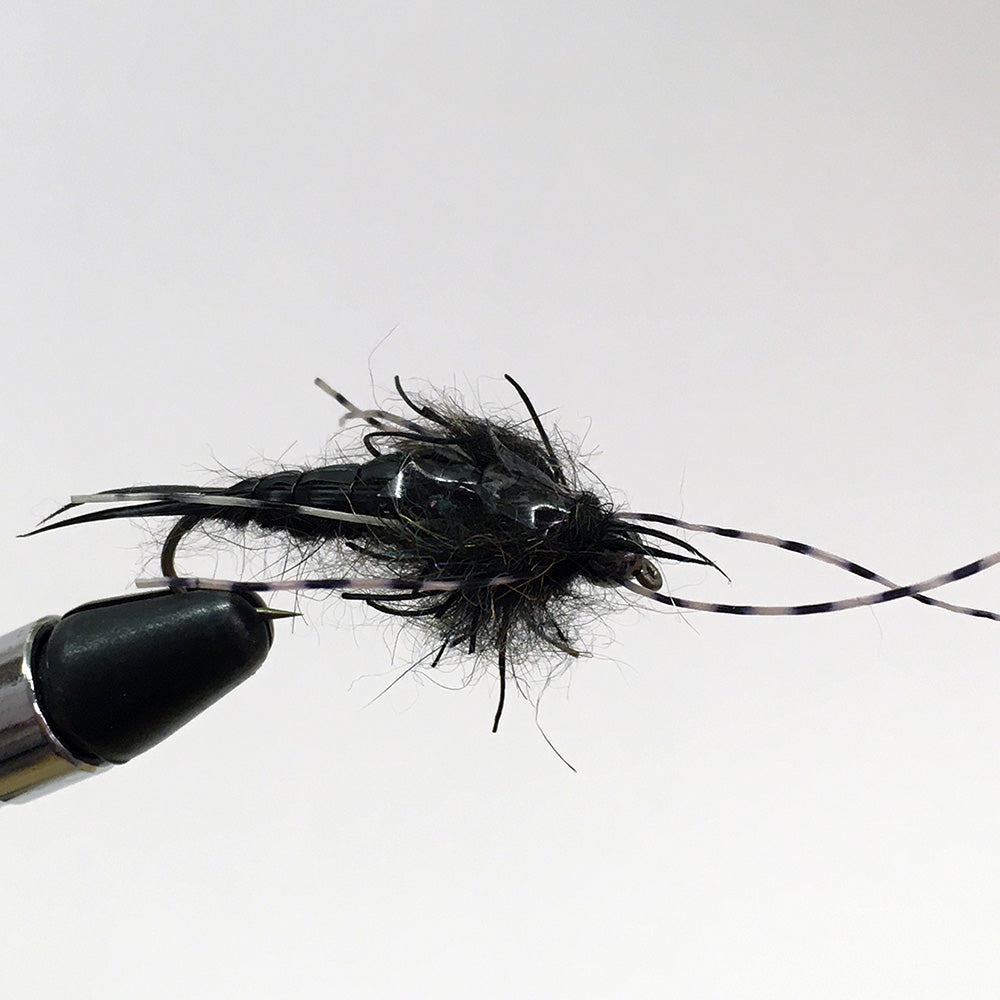
Stonefly Nymphs for Bass
The Bass Stonefly Nymph has a second very important use for the smallmouth angler. The riffles composed of volleyball size stones hold great numbers of natural stonefly nymphs that the smallmouth feed heavily upon. My favorite way to fish my stonefly nymph in these riffles is to start on the side of the river twenty feet downstream of the riffle and cast straight upstream or up and across stream at a twenty degree angle so the nymph falls into the uppermost part of the riffle. Allow it to sink deeply then remove all of the slack line with your line hand. Strip the nymph back downstream with your line hand so you have a tight line all the way to the fly. I place two Murray's Indicators along my 9ft 2X Bright Butt Leader and watch these very closely in order to detect the bass'es strike, then I set the hook with my line hand in addition to the rod.
By wading slowly across the river and methodically fishing every run over two feet deep you will take many smallmouth.

Caddis Nymph for Bass
The Murray's Bass Caddis Nymph size 6 will help you catch many smallmouth around the aquatic grass beds along the banks and those which encircle the limestone ledges throughout the river. Wading 50 feet out from these grass beds, cast your Caddis Nymph straight into the edge of the grass. Then strip it out 4 inches every 5 seconds until it is 20 feet from the grass. Then pick it up and cast it every 5 feet along the grass as you wade downstream along the grass.
This fly is also very effective fished upstream dead drift below the riffles. The leader-rig and technique is the same as I use with the Bass Stonefly Nymph. I just experiment with each fly in order to find out which is most effective in each riffle.

Hellgrammites
Hellgrammites (the larva of the dobsonfly) are one of the most important foods for the smallmouth bass. Their habitat is in the riffles and the cobblestone stream bottoms for 200-ft downstream from the riffles. They have a three year growth period so they are always present. As a kid I used the real hellgrammites as a live bait. However, when I started fly fishing I got very poor results with all of the existing flies. I purchased the best looking hellgrammites Abercrombie and Fitch in NY had. I even had Dan Bailey's workers in Montana tie some oversized mossbacks.
However, none of them caught many bass. I finally went to the river and collected some real hellgrammites. Dropping them in the river one by one, I watched them closely to see how they acted. Right away I saw why all of the existing hellgrammite flies failed to catch bass. The real hellgrammites I dropped into the river swam downstream diagonally with a pronounced undulating action. Finally, after experimenting with many different materials and tying styles, the Murray's Hellgrammite evolved.
This is very effective and I find most anglers can catch a bass regardless of the angle they fish it simply because it produces a strong undulating action.
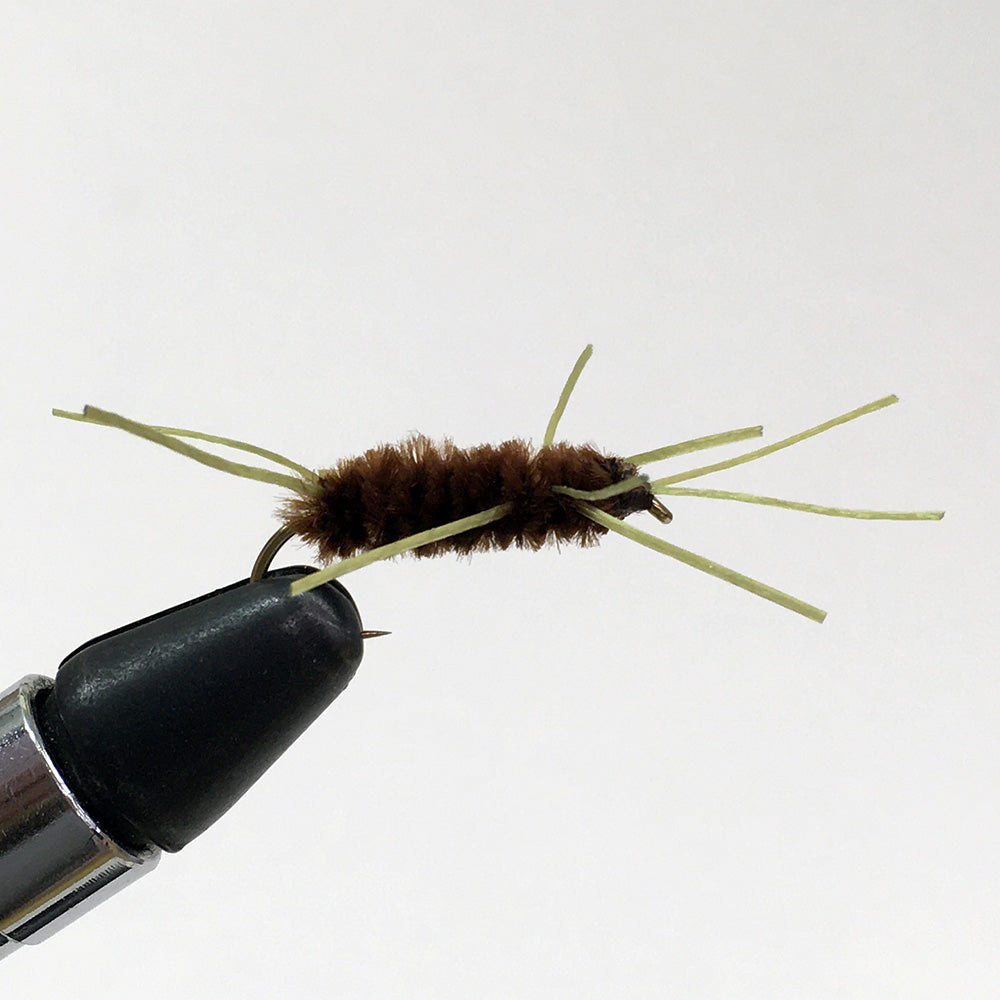
Rubber Leg Bass Nymph
The Rubber Leg Bass Nymph in size 8 has an almost explosive action when stripped across the slow pools with a firm strip-pause-strip action. One of my students was a very good caster so I took him to a flat pool which was half the size of a football field that was 3-4 feet deep and had dozens of SUV size grass islands. These grass islands provided great feeding stations for the bass because of the shade they provided. Wading up through this pool he fished the edges of these grass islands by swimming the Rubber Leg Nymph right along the edges and caught many bass. Anytime you have slow flat pools whether they are large or small, wade carefully and try this nymph.
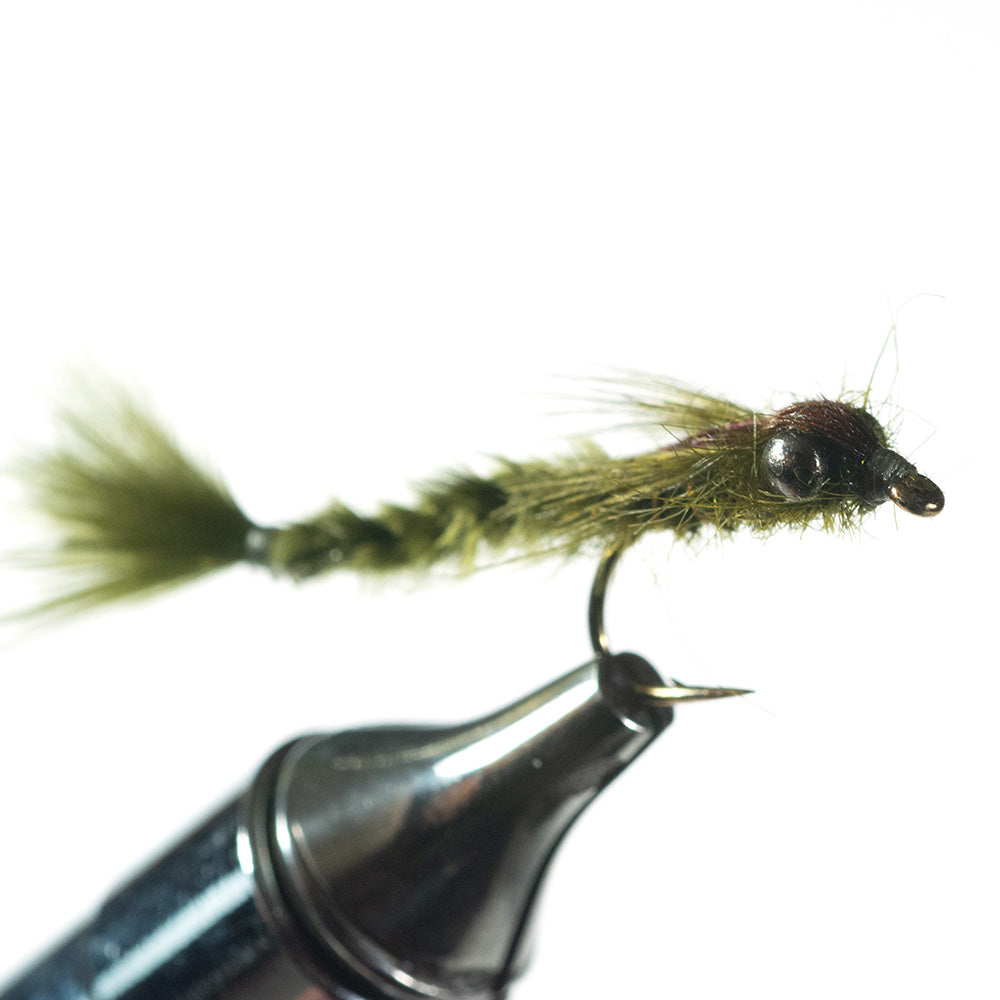
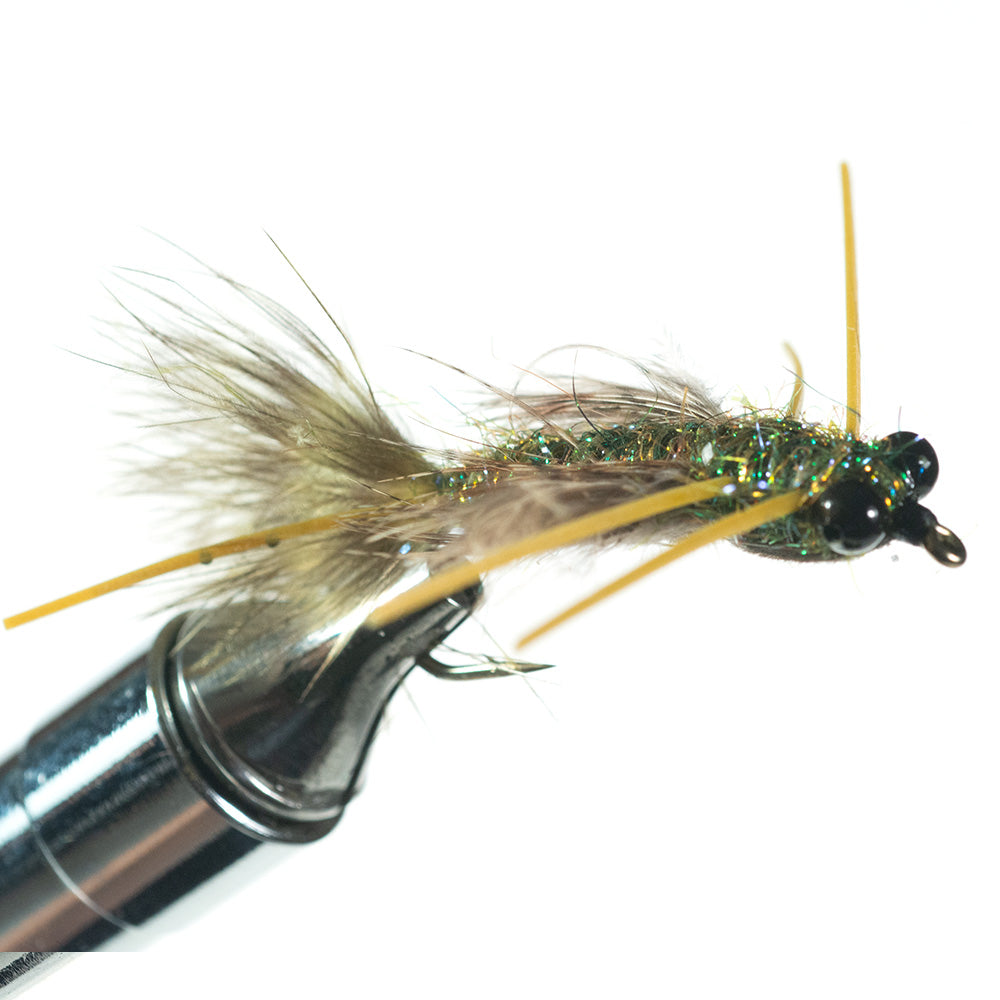
Damselfly & Dragonfly Nymphs
Now, let's talk about the Damselfly Nymph. I have learned a few things from my students over the years but one day particular stands out. Jim Snyder, my student, caught a few nice smallmouths however one very large bass outsmarted him. He tried streamers and deer hair bugs, only to have the bass come out from a jungle of downed tree limbs to look at it and refuse it. Jim then looked at me and said "would it be okay with you if I would go upstream and wade across the river and try that bass from the other side of the river?" I thought that was a good idea so I kept an eye on him while helping other students. He snuck down to the bass'es feeding station beside the mass of downfalls and cast a damselfly nymph. The next thing I knew, Jim was setting the hook and landing the largest bass of the day.
You can often catch many bass by fishing a damselfly nymph with a slow spurting action along the edge of aquatic grassbeds which form along the river banks and that encircle the limestone ledges in mid-river.
The natural dragonfly nymph is a big ugly mouthful for the smallmouth bass. I often find them around rotting logs on the stream bottom where their are slow currents.
Deep slow back eddies hold a great amount of old rotting down timber where dragonfly nymphs make their homes. A very effective technique is to use a slow hand twisting retrieve to crawl a Dragonfly Nymph right along the stream bottom. In this slow water a floating line with a slow retrieve works best. However, if there is a fast current in the back eddy I use a sinking tip III line. In this case a four-inch jet like spurt fast swimming retrieve with the Dragonfly Nymph brings me more strike from large bass.
These nymph fishing methods are very effective in all smallmouth rivers. Here in Virginia, I have success with them on the James River, New River, Clinch River and on both the North and South Forks of the Shenandoah River.
Video
-
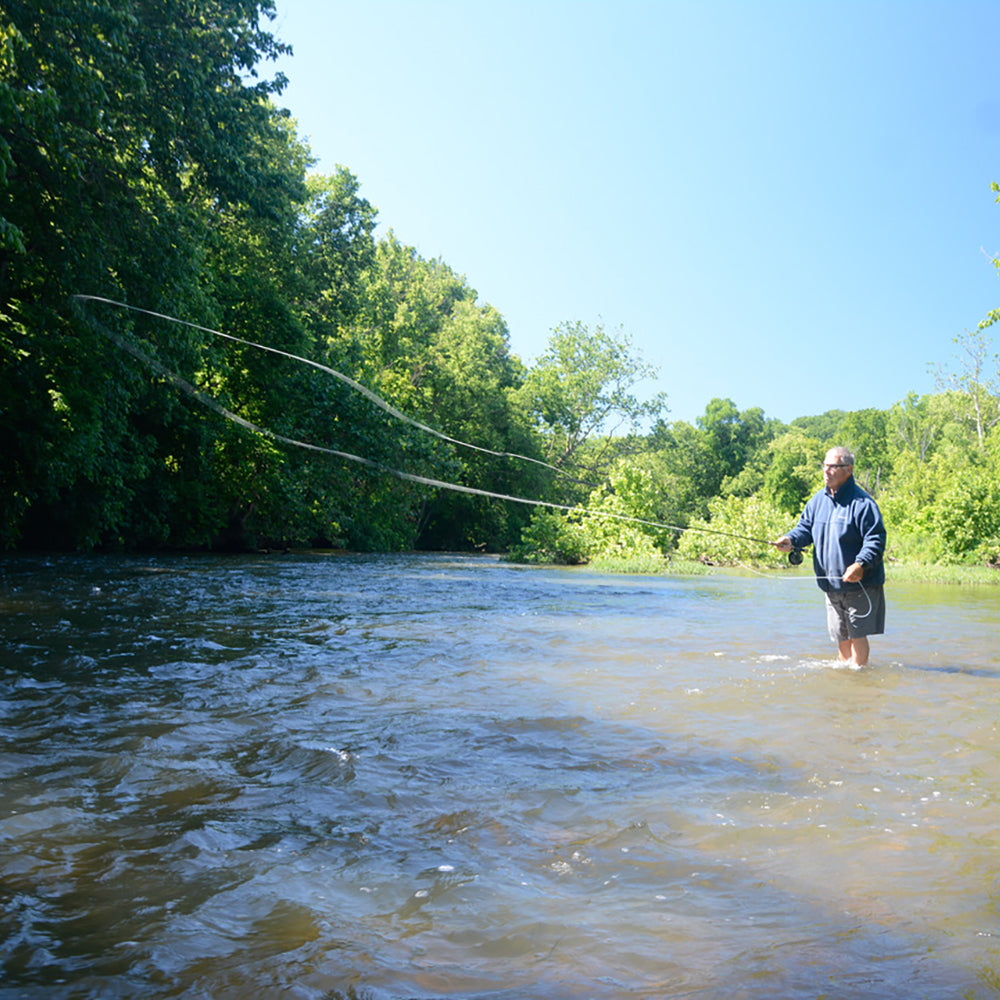
Learn Fly Fishing at Murray’s Fly Shop: Classes, Workshops & Schools
Welcome to Murray’s Fly Shop – Your Fly Fishing Learning Hub At...
-
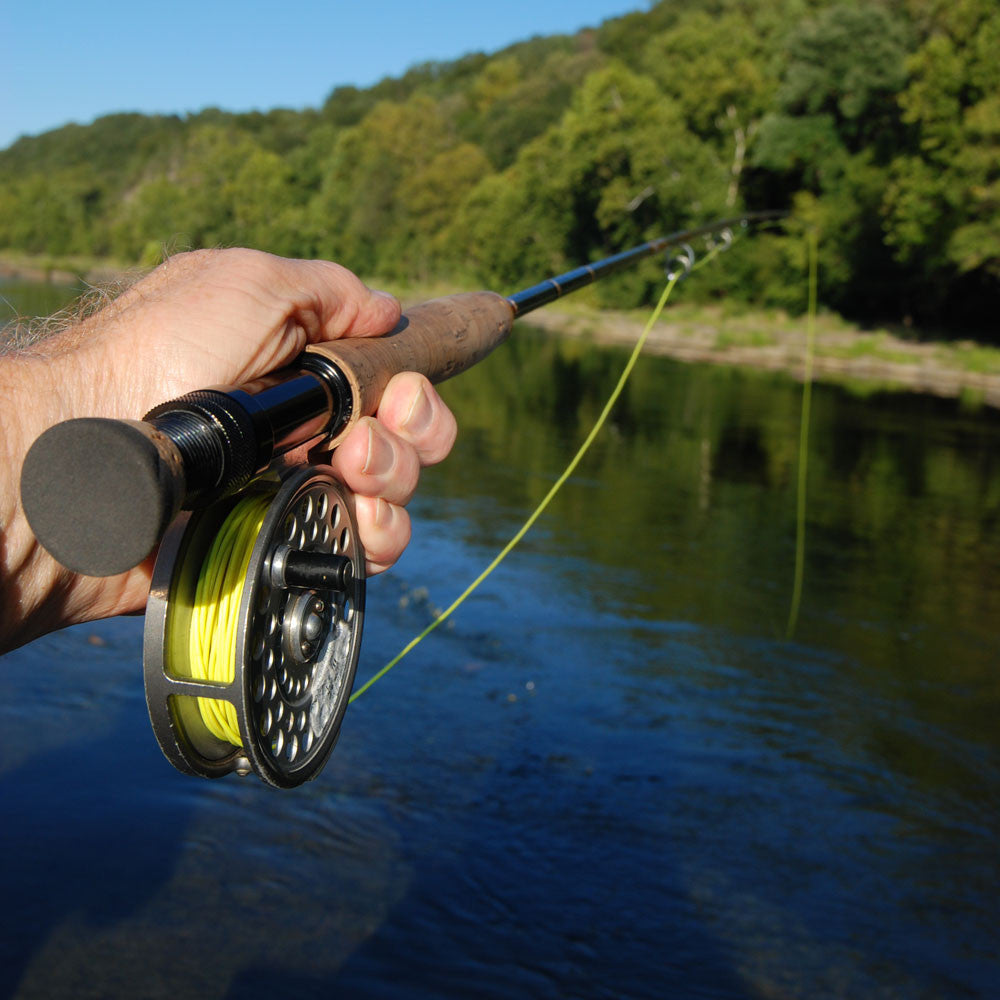
Bass Fly Rod and Reel Outfits
I have had many requests for various bass fly rod and reel...
-
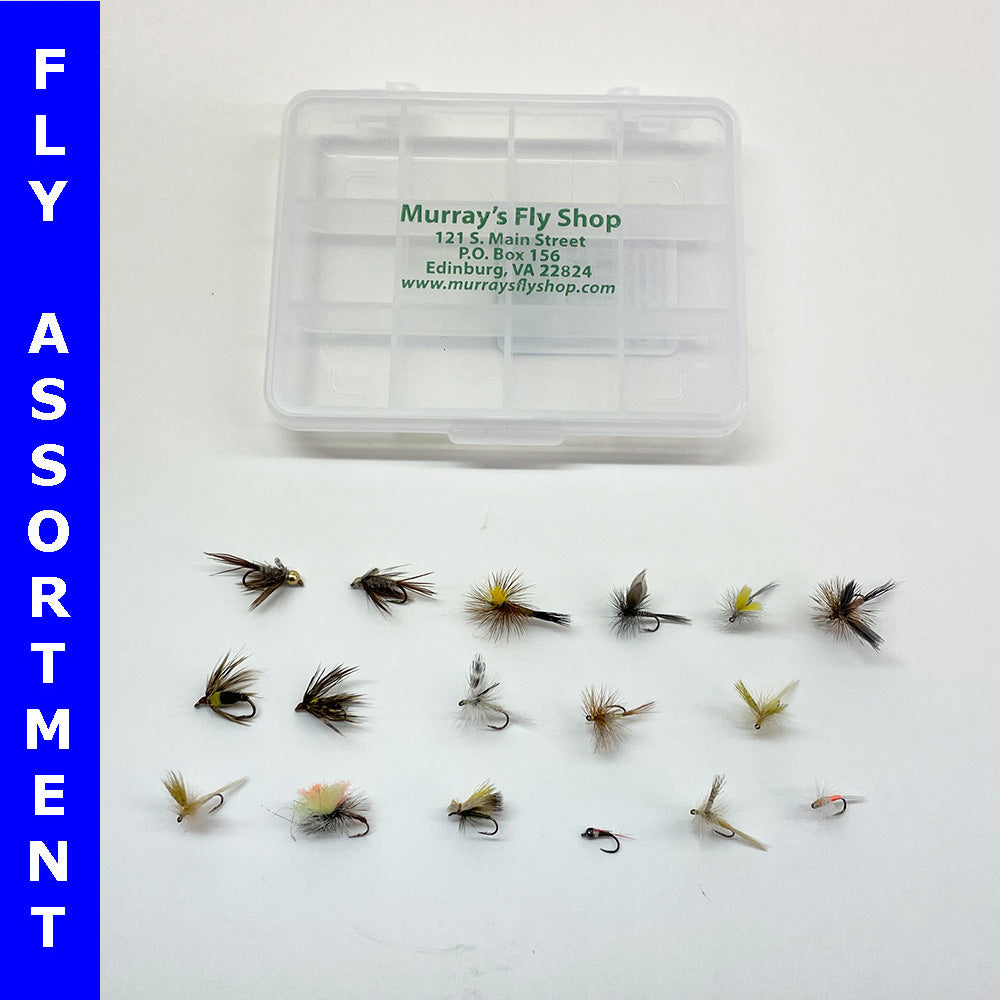
Murray’s Fly Shop Fly Assortments – Premium Custom Flies for Trout, Bass, Shad & More
Premium Fly Fishing Assortments at Murray’s Fly Shop – Perfect for Every...
